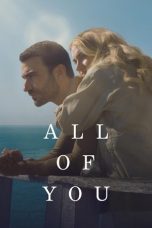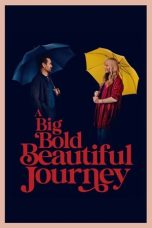Pierrot le Fou (1965) Review: A Revolutionary French New Wave Classic
Introduction
Pierrot le Fou, directed by Jean-Luc Godard and released in 1965, is a seminal film in the French New Wave movement. Featuring Jean-Paul Belmondo and Anna Karina in the lead roles, this film is celebrated for its innovative storytelling, stylistic experimentation, and thematic depth. As a bold and visually striking work, Pierrot le Fou has left an indelible mark on cinema and continues to be a subject of study and admiration. This review will delve into the film’s plot, performances, direction, and provide information on where to stream, rent, or purchase the film in the United States.
Plot Summary
Pierrot le Fou follows the story of Ferdinand Griffon (Jean-Paul Belmondo), a disillusioned Parisian advertising executive who escapes his mundane life with Marianne Renoir (Anna Karina), a former lover. The two embark on a road trip across France, becoming entangled in a series of criminal escapades as they flee from pursuing hitmen. As their journey unfolds, the film explores themes of love, alienation, and existentialism through its unconventional narrative and striking visual style.
The film is known for its fragmented narrative and playful use of cinematic conventions. It challenges traditional storytelling structures, opting for a more free-form approach that mirrors the characters’ restless and rebellious spirits.
Standout Performances
Jean-Paul Belmondo delivers a charismatic and energetic performance as Ferdinand Griffon. His portrayal captures the character’s existential angst and adventurous spirit, making him both an engaging and sympathetic figure.
Anna Karina shines as Marianne Renoir, bringing a blend of charm and unpredictability to the role. Her performance complements Belmondo’s, creating a dynamic and intriguing on-screen partnership.
Both actors bring a sense of spontaneity and authenticity to their roles, which is central to the film’s exploration of freedom and rebellion.
Direction and Cinematic Style
Jean-Luc Godard’s direction in Pierrot le Fou is marked by its radical and experimental approach. The film is a hallmark of the French New Wave movement, known for its innovative use of visual and narrative techniques. Godard employs jump cuts, unconventional framing, and vibrant color schemes to create a unique and visually striking experience.
The film’s cinematography, by Raoul Coutard, complements Godard’s direction with its bold and expressive style. The use of color and light enhances the film’s emotional and thematic impact, while the free-form narrative structure reflects the characters’ desire for liberation and self-expression.
Pierrot le Fou also incorporates intertextual references and playful nods to cinema history, adding layers of meaning and contributing to its status as a groundbreaking work in film history.
Themes of Freedom, Love, and Existentialism
Pierrot le Fou explores themes of freedom, love, and existentialism through its narrative and character interactions. The film delves into the characters’ search for meaning and authenticity in a world that feels increasingly artificial and confining.
The road trip serves as a metaphor for the characters’ quest for liberation, as they break away from societal norms and expectations. The film’s exploration of love is complex and ambivalent, reflecting the characters’ conflicting desires and emotions.
Existentialism is a central theme, with the characters grappling with questions of identity, purpose, and the nature of existence. Godard’s innovative approach to storytelling and visual style enhances the film’s thematic depth and intellectual engagement.
Critical Acclaim and Reception
Pierrot le Fou is widely regarded as a masterpiece of the French New Wave and has received acclaim for its innovative approach and thematic richness. Critics have praised Godard’s direction, the film’s visual style, and the performances of Belmondo and Karina. It remains an influential and highly regarded work in the history of cinema.
The film’s experimental nature and departure from conventional storytelling have made it a subject of critical analysis and discussion. Its impact on subsequent filmmakers and its role in the evolution of modern cinema are widely recognized.
Streaming and Rental/Purchase Options in the USA
For those interested in watching Pierrot le Fou, there are several streaming and rental/purchase options available in the United States:
- Streaming Services: Pierrot le Fou may be available on streaming platforms such as Criterion Channel and Hulu. Availability can vary, so checking current listings on these platforms is recommended.
- Rental/Purchase: If you prefer to rent or purchase the film, it can be found on digital platforms such as iTunes, Google Play, and Amazon Prime Video. Rental prices typically range from $2.99 to $4.99, while purchase prices are around $9.99 to $14.99, depending on the platform and video quality.
Conclusion
Pierrot le Fou is a revolutionary and influential film that exemplifies the spirit of the French New Wave. With its innovative direction, striking visual style, and exploration of complex themes, the film offers a compelling and thought-provoking cinematic experience. Whether you are a fan of classic cinema or interested in the evolution of film, Pierrot le Fou is a must-watch for its artistic and historical significance.
Call to Action
If you haven’t yet experienced the groundbreaking world of Pierrot le Fou, now is the perfect time to watch this iconic film. Check streaming platforms like Criterion Channel or Hulu, or visit iTunes, Google Play, or Amazon Prime Video to rent or purchase it. Immerse yourself in Jean-Luc Godard’s visionary filmmaking and discover why Pierrot le Fou remains a landmark in cinematic history.
















